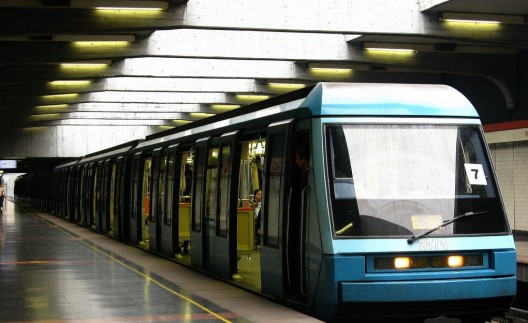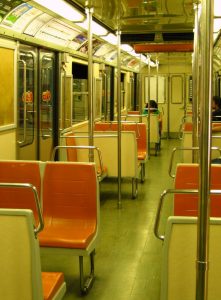
The Metro de Santiago first opened in Chile in 1975, and today currently serves around 2,300,000 people every day, making it the second longest in Latin America and the 4th largest in the Americas by annual passenger rides. The Santiago metro system is very safe, clean, efficient, and reliable. The stations are clean and spacious, and the trains on two of the busier lines were recently installed with air conditioning systems for the crowded, hot summer months. Art is also quite present in the metro stations. The station Universidad de Chile contains a mural created by Mario Toral and shows the history of Chile. Other stations with beautiful artwork or history of Chile are Los Leones, Baquedano, Los Heroes, Bellas Artes, La Moneda, Plaza de Armas, and many more. Make sure to take a few minutes to appreciate the artwork before heading up to the street. The system includes 5 lines, 108 stations, and 103 kilometers of tracks. Currently two new metro lines are being constructed, and will be unveiled in 2016 and the other in 2018.
When you are in Santiago, you will probably find the metro system to be the cheapest option, and the easiest way to navigate the city. All stations made after 1990 are equipped with handicap-accessible elevators, and it is an ongoing project now to equip the rest of the stations with elevators. Trains run from 6:00am to 11:00pm, which seems early for some people, but it assures maintenance, cleanliness, and overall safety of the system. To begin you will need to purchase a Bip! card. These cards cost $1,400 and can be purchased at any boletería (ticket office) in every metro station. With this card you can put money on it and use it on the metro and all buses. This is the only form of payment on the buses, so make sure your card is charged up! The prices of a metro ride change around the busier times of the day. At the cheapest you will pay $580 and the most you will pay during “Horario Punta,” or rush hour, is $690. If you are only in Santiago for a day or two, it might suit you better to buy a single-trip ticket for the times that you use the metro, instead of paying for a Bip card. The tickets change in cost depending on the time of day, just like with the Bip cards.

It will also be convenient to know that many metro stations connect to the bus stations, where you can get a bus any time of the day to other regions and cities in Chile. Universidad de Santiago, Pajaritos, and Estación Central (which connects to the train system) are all on Line 1, the Red Line, and getting off at these station bring you to the extensive bus system of Chile. On Line 5, the Green Line, Bellavista de la Florida has a bus station where you can travel to Cajon de Maipo, a popular place to camp on the weekends or for some authentic Chilean food.
As with any metro system, the transfer stations where lines cross are always the busiest stations, and can be confusing. Luckily the metro system here is very easy to navigate for foreigners. Maps of the metro lines are placed frequently on the trains and around the stations. Exits and entrances are written in Spanish and in English, and you can always ask a metro worker or a fellow traveler for assistance. Also, if possible, avoid the metro at the busiest times of the day: 8:30-9:30am and 6:30-7:30pm. Like most big cities, these times assure the most congested trains. Of course if you have to travel during those times it is fine, just be prepared to be a little more patient and/or more aggressive! Be mindful of other passengers, but also guard your belongings closely at all times, as there are cases of pick pocketers on the metro.
You can download a pdf of the metro map below…

Article by:
Emma Fritz
